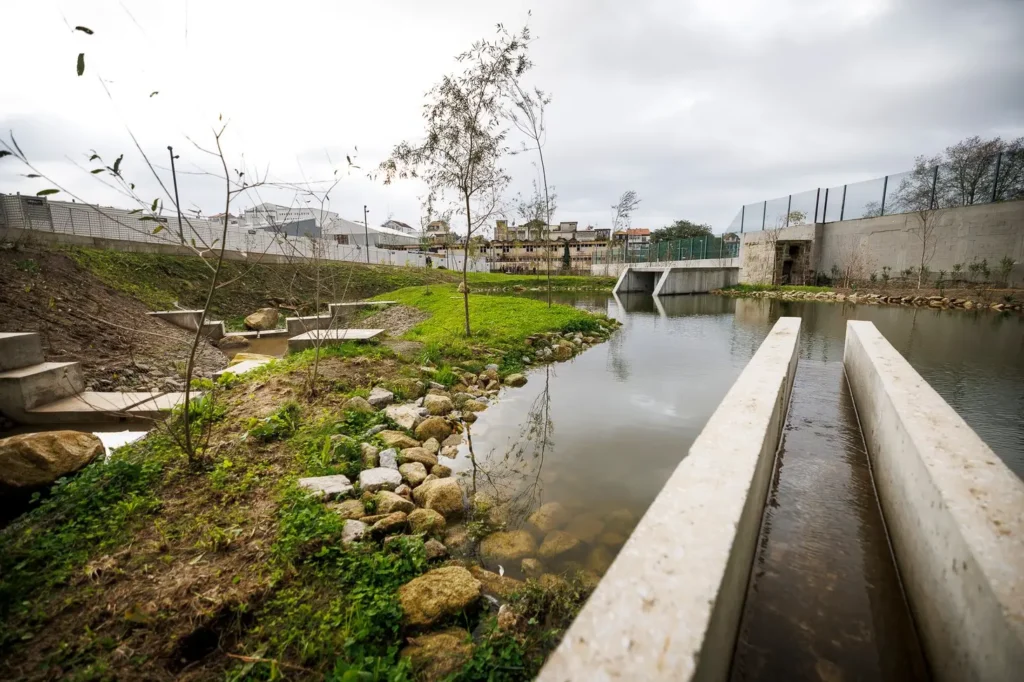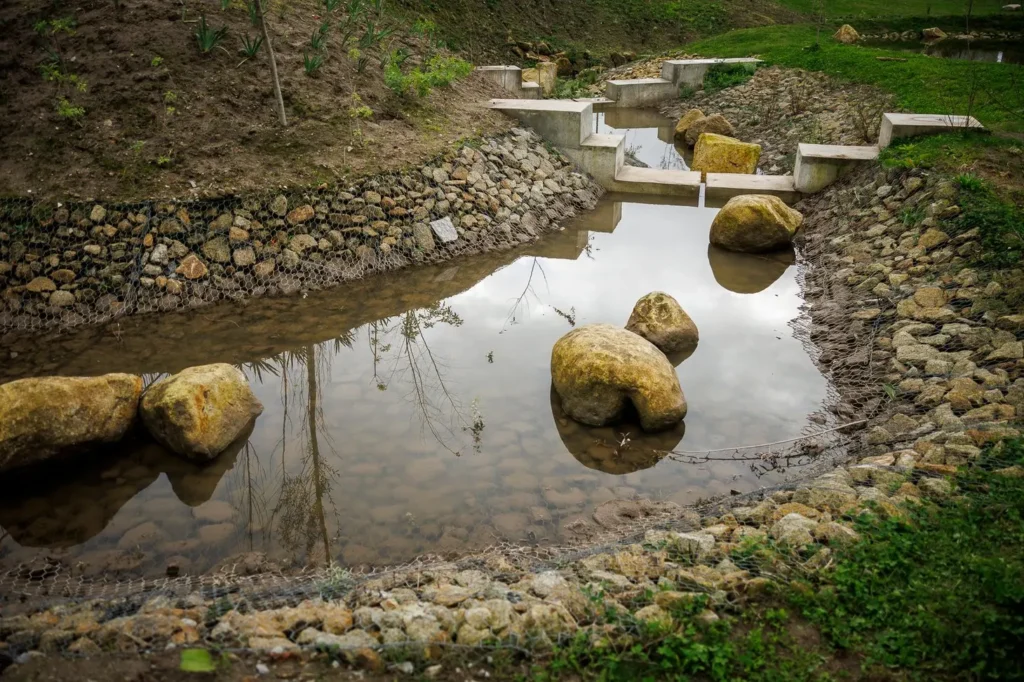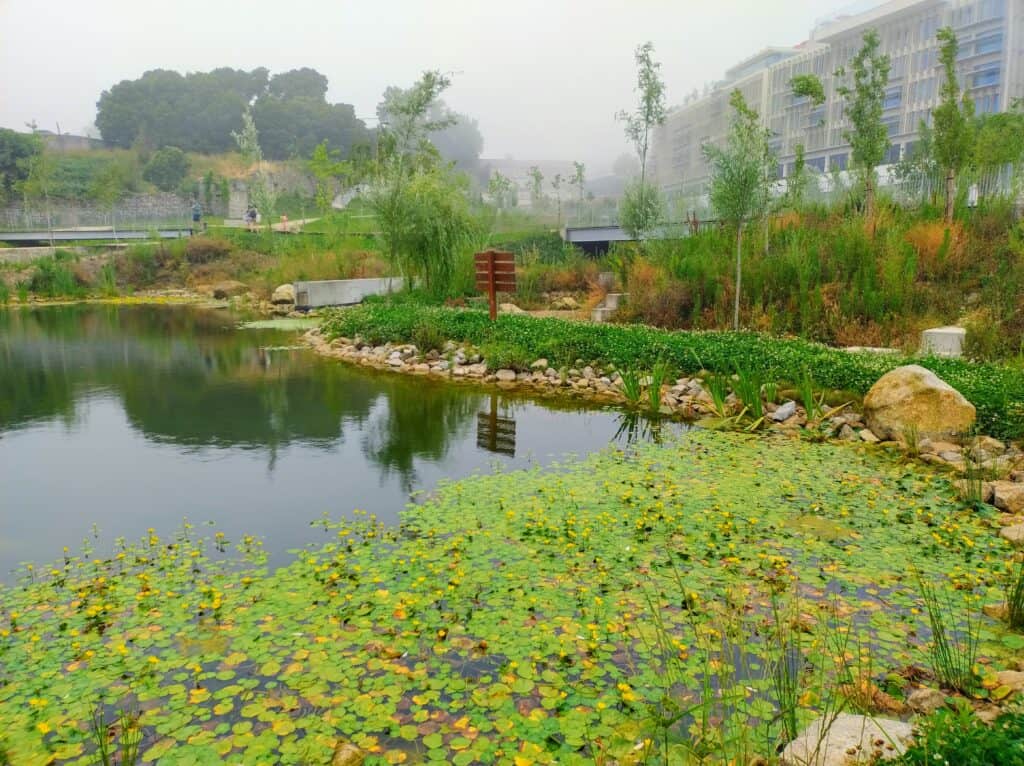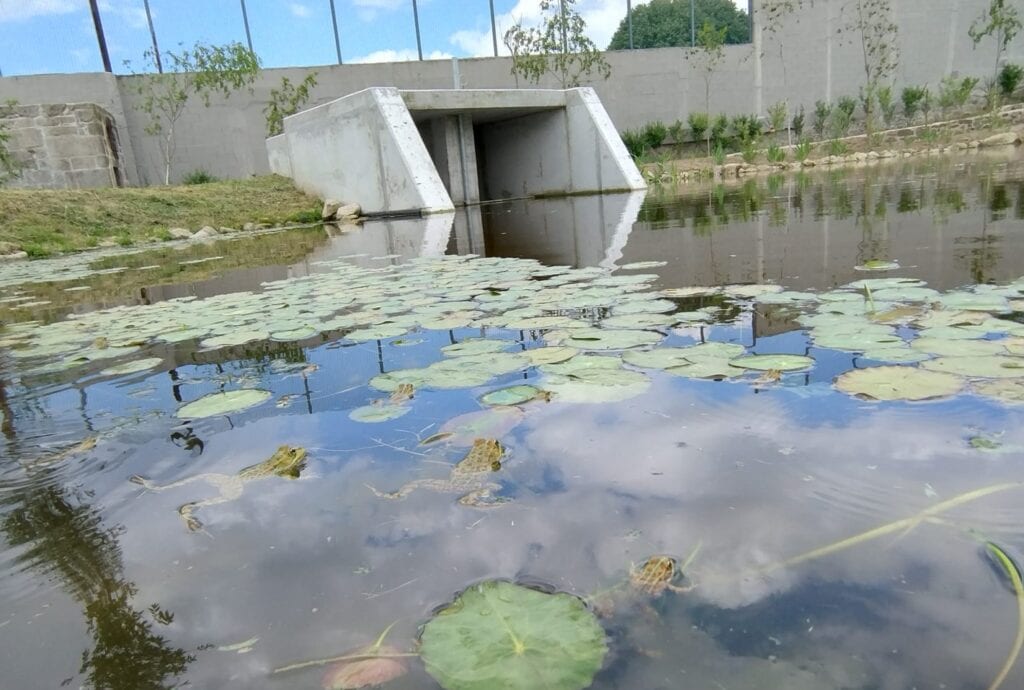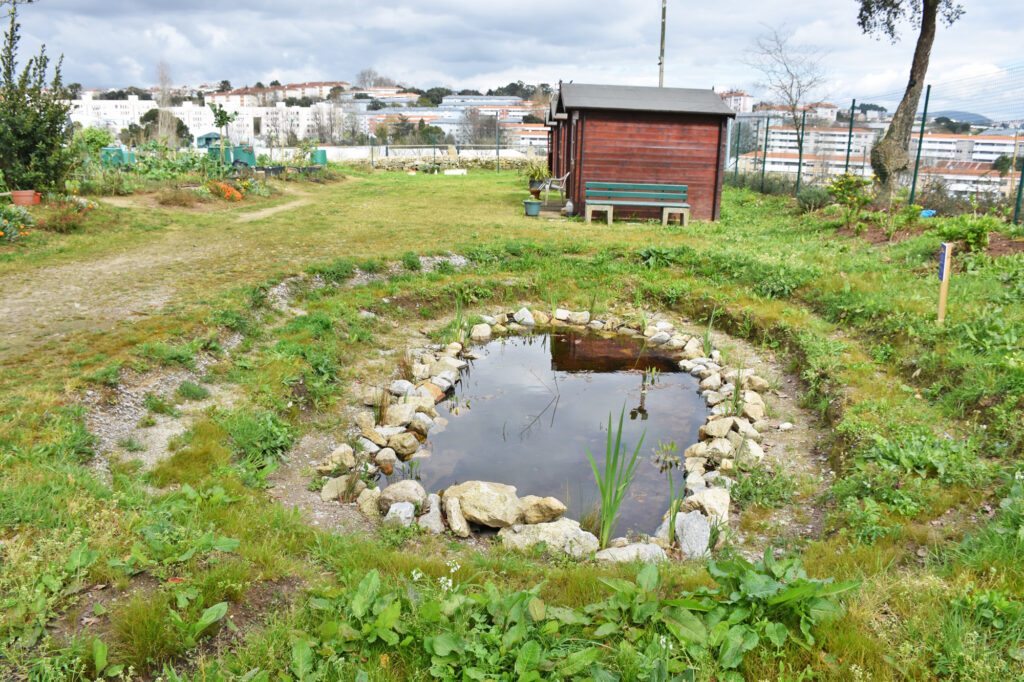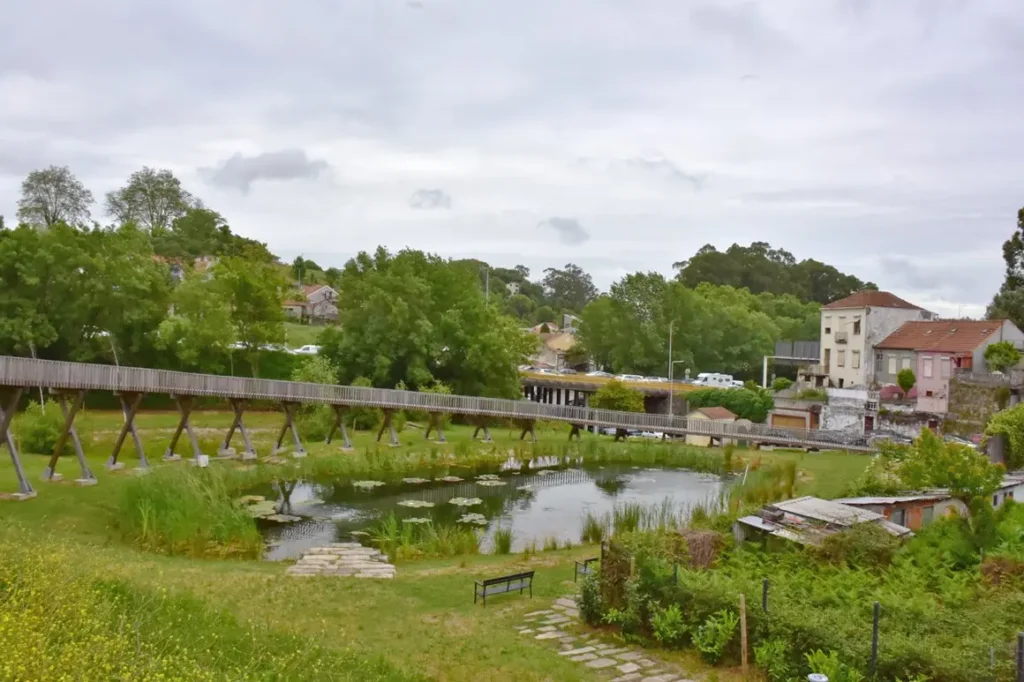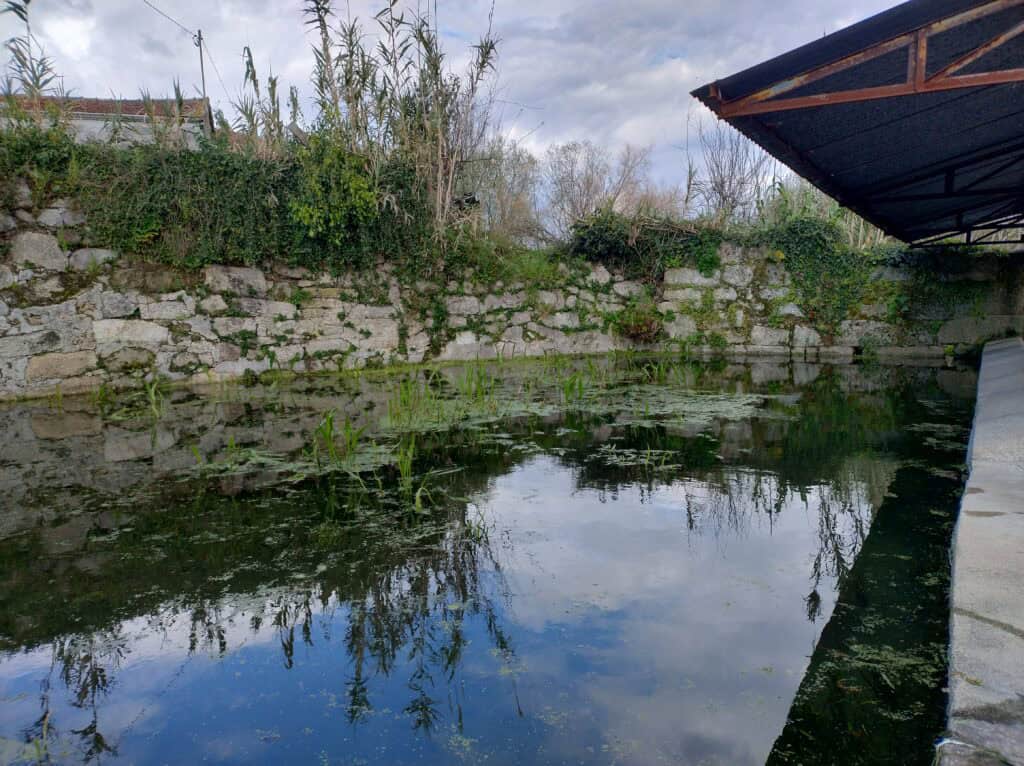With the construction of the Parque Dr. Mário Soares and the renaturalisation of this stretch of the Ribeira do Vilar, a water retention basin was built, as well as a small pond, both adjacent to the stream. This intervention made it possible to increase the biodiversity and phytodepuration capacity of the watercourse, improving environmental quality by planting various species of native aquatic plants. These strategically selected plants play a crucial role in increasing the ecosystem’s ability to filter pollutants, fix sediments and promote the natural purification of the water in this watercourse.
The rehabilitation of the streams and the construction of the retention basin were carried out by the Municipality, in partnership with CIMAR (Interdisciplinary Centre of Marine and Environmental Research). The main objectives of this interventions are to increase knowledge of the city’s wetlands, mapping, biological inventory and characterisation, with a view to adopting conservation and restoration measures and creating new water bodies.
Address
Lapa
Location
Cedofeita
Promoter
Municipality of Porto/CIIMAR
Presentation
Ecological functions
Improvement of water quality; Improvement of quality of life; Promotion of biodiversity; Reduction of extreme climatic events; Regulation of air quality; Regulation of temperature; Regulation of floods; Carbon sequestration
Sustainable Development Goals
3 - Good Health and Well-Being; 11 - Sustainable Cities and Communities; 13 - Climate Action; 15 - Life on Land
OTHER SUGGESTIONS
A pond that was built as part of the redevelopment of a school, which is right next door and which, in addition to its teaching function, also serves as a water retention basin for water from the school's roofs, an infiltration point for surplus water in the aquifers and a promoter of biodiversity.
A large retention basin that filters rainwater, reduces flooding and recharges aquifers. It supports biodiversity with important habitats for amphibians and aquatic plants. It also offers leisure areas, integrating urban functionality and environmental sustainability.
A pond, once used for traditional purposes, was renaturalized by removing invasive plants and installing ramps for amphibians. Today it is a vital refuge for aquatic biodiversity, with several native species, promoting coexistence between nature and local agriculture.
